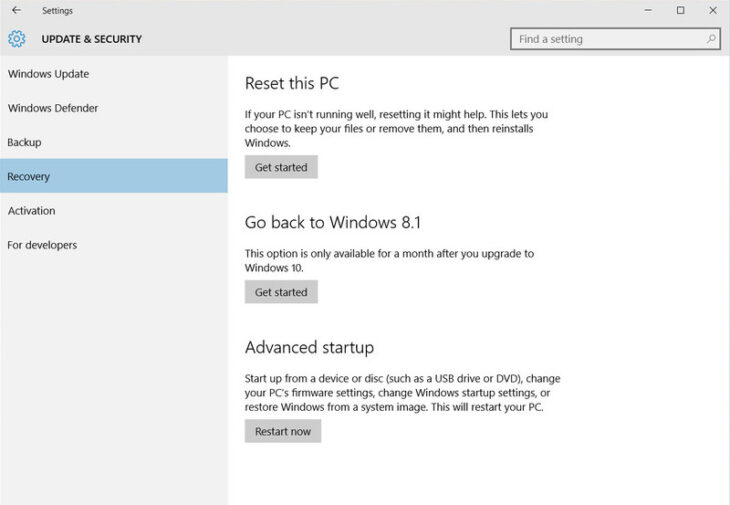Podcast: Play in new window | Embed
Troy asked: “Wondering if there is any way to reverse Windows 10 back to Windows 7 or 8?”
If you upgraded your computer to Windows 10 less than a month ago, Windows will do it for you.
Just search for “Update & security” on your Windows 10’s built in search and in that settings panel go to “Recovery” and you should see the option right there.
If it’s been more than month you will have put in a little more work: you will need to do a clean install of 7 or 8, whichever you prefer. If you happen to have your own backup this may be easier, but you will most likely have to go to Microsoft’s site and download a Windows 7 or 8 ISO, that’s free and legal, but keep in mind that you will need a valid product key.
If it’s been more than month you will have put in a little more work: you will need to do a clean install of 7 or 8, whichever you prefer.
After you have the ISO, you can use Microsoft’s own USB/DVD download tool to create a bootable copy that you can install.
Then just boot from that copy and reinstall Windows.
Now here’s the really important part: you’re wiping all of your files and all of your programs when you do this. Backup absolutely everything you don’t want to lose because this will be a completely clean Windows installation, you will have to put everything back how you had it or how you like it as after Windows reinstalls.
And since we’ve mentioned that 30-day rollback to the previous version of Windows that’s part of Windows 10, we should toss in that those folks who ARE satisfied with their Windows 10 upgrade can recover the disk space being reserved for that rollback, which in some cases is as much as 30 to 60 GB of disk space.
Go to Settings, then click Storage, then click on “This PC (C:)” from the list of attached devices. Scroll down and click Temporary Files. At the bottom of that list, you will see Previous Version of Windows. You can delete those files, if you don’t plan on going back.
If you don’t see a previous version of Windows in the Temporary Files area, then either you already deleted it or it deleted itself after the 30 day period was up. But especially for those people who have limited storage space such as an SSD for their boot drive, being able to reclaim that disk space immediately can be extremely useful.


